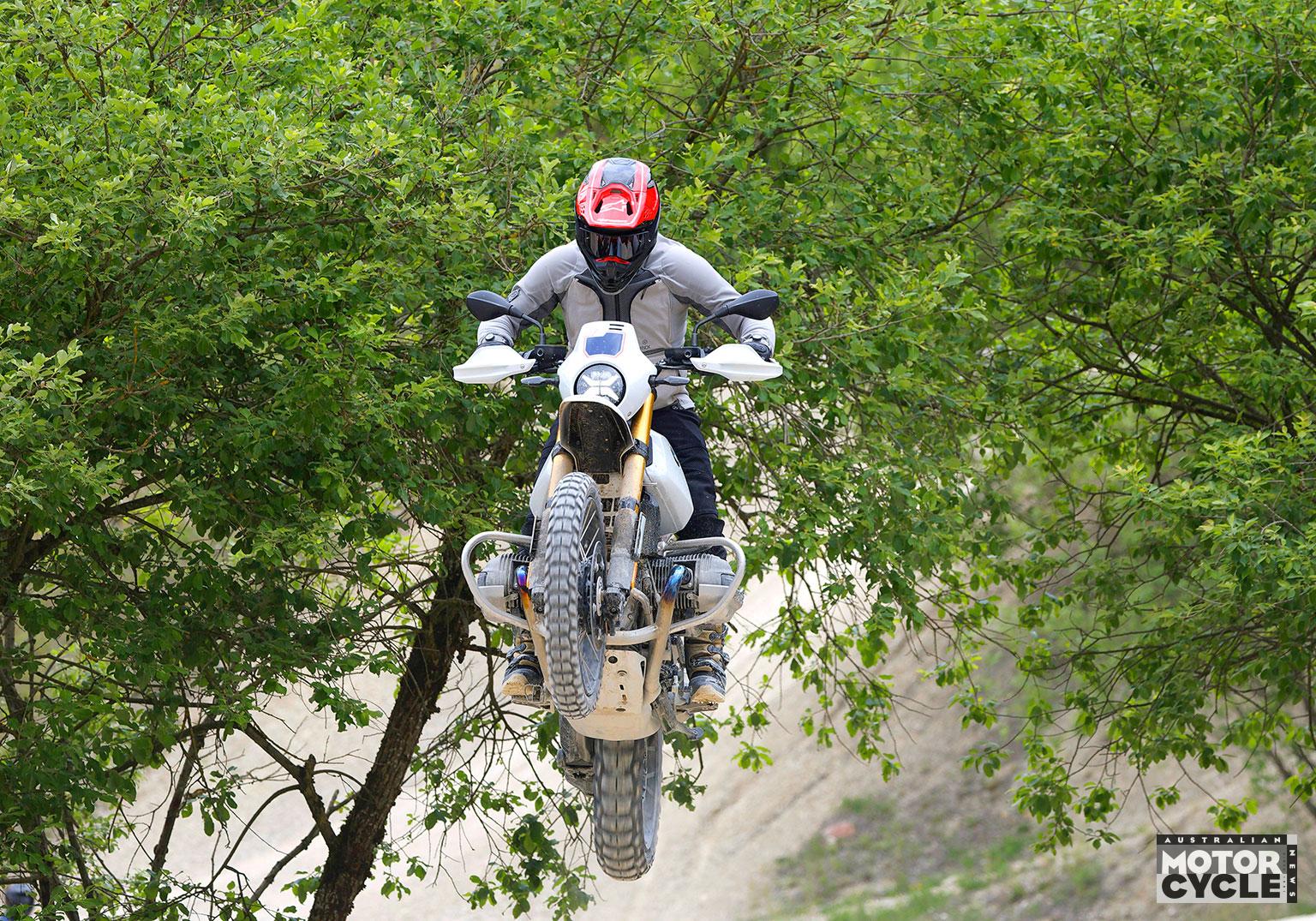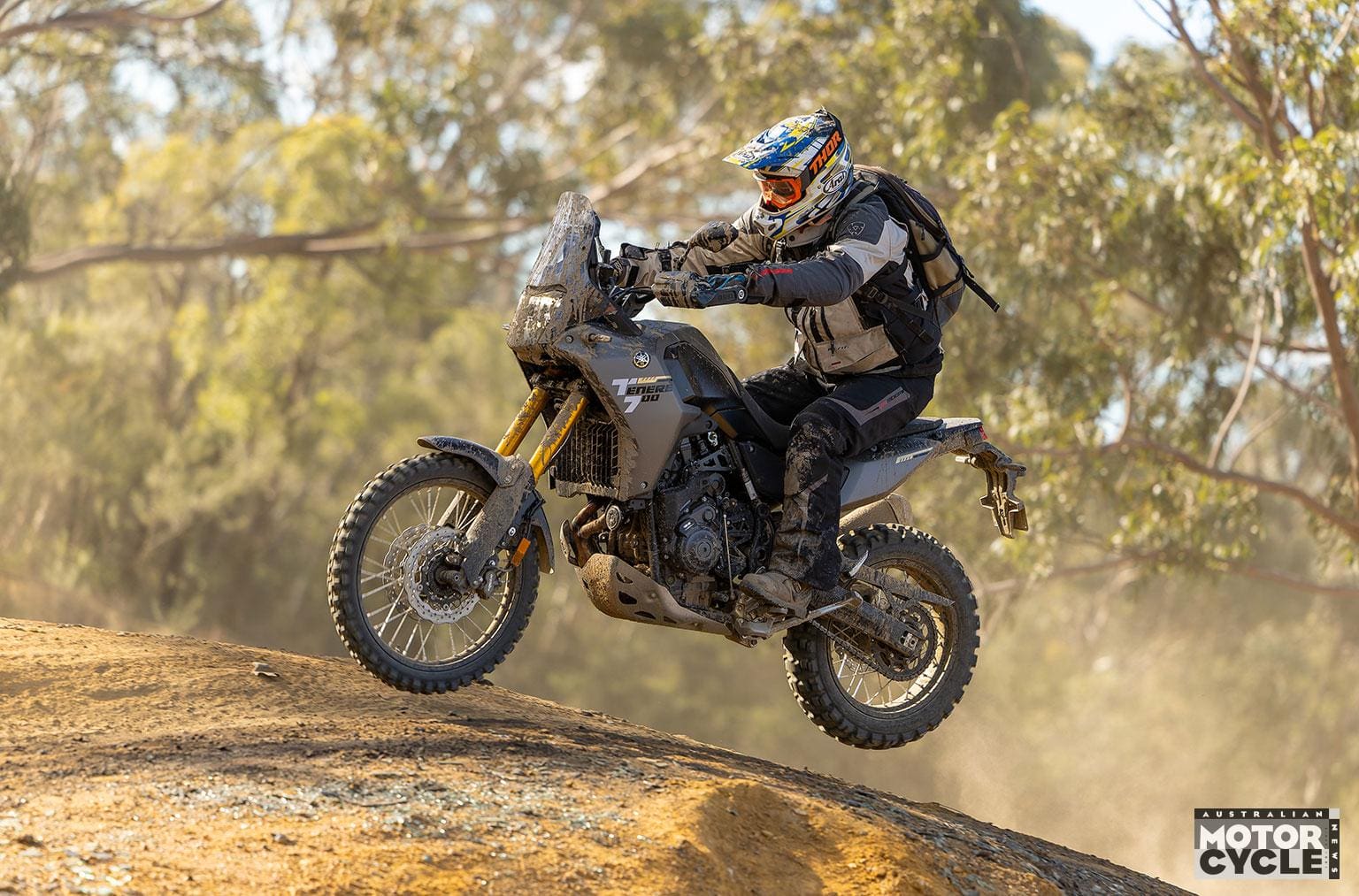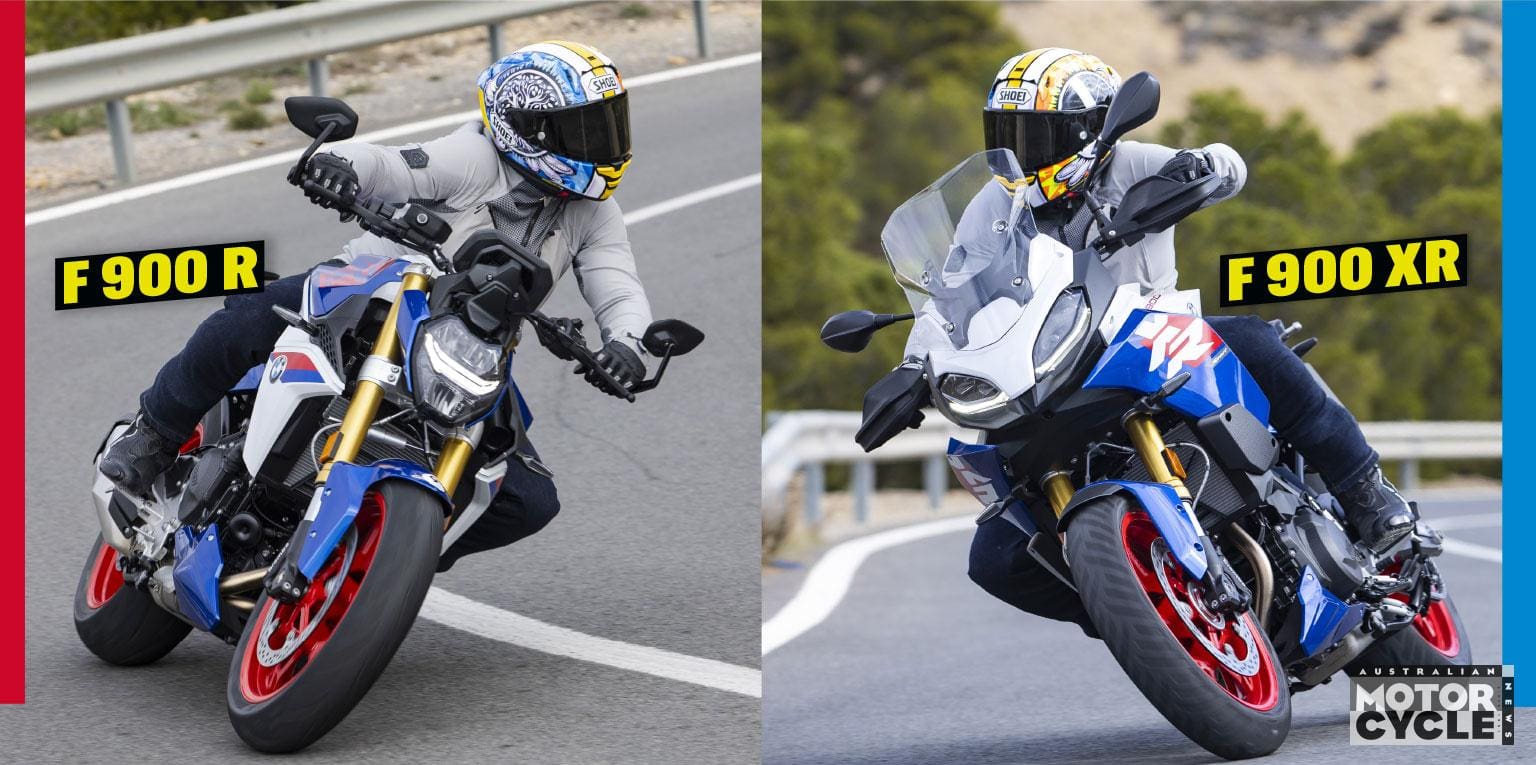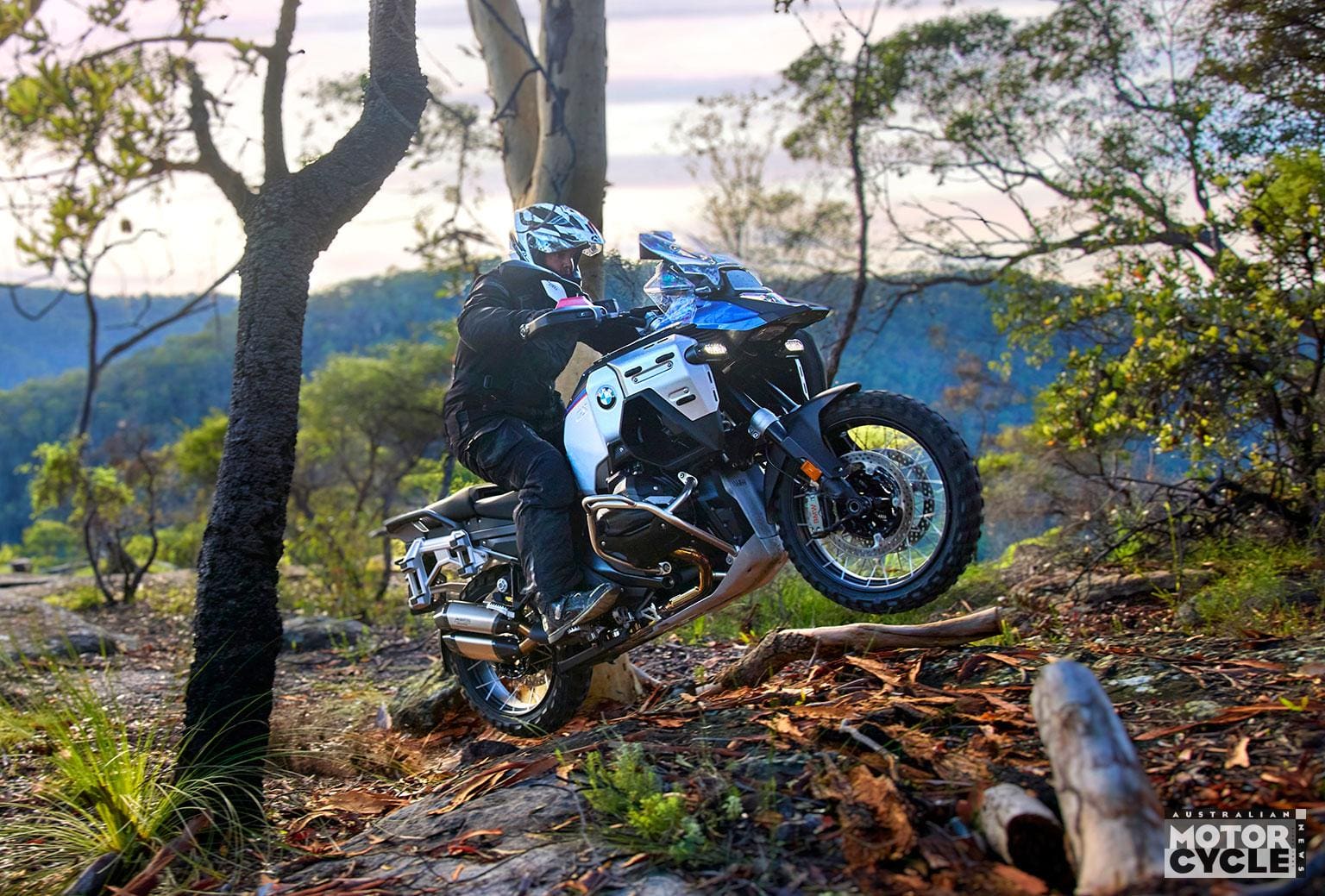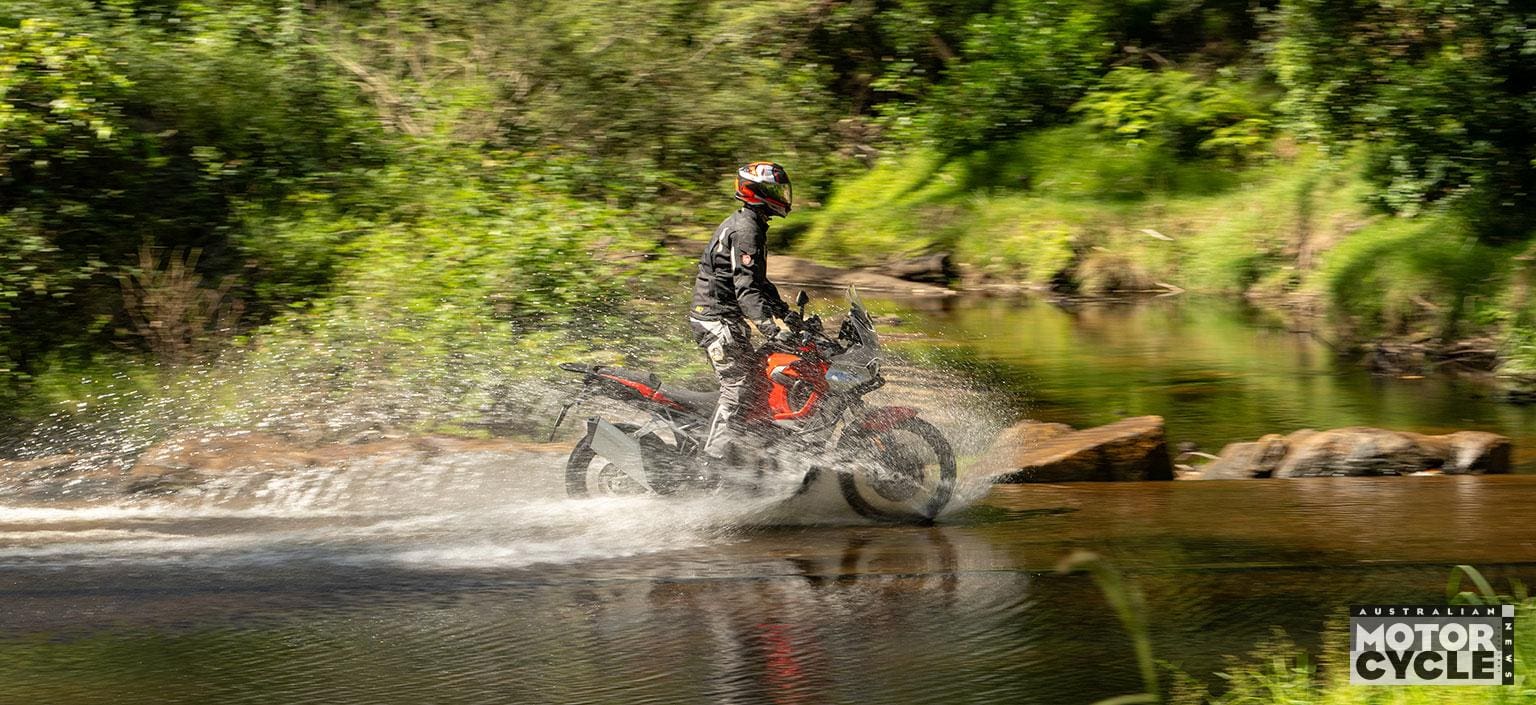Does the new Stelvio have enough Italian zest to entice buyers away from the established adventure menu?
The last time our Antipodean shores were graced with a Stelvio adventurer was with the 1200cc oil-cooled model a decade ago. But Moto Guzzi are looking to bloody some adventure beaks with their all-new contender, featuring a signature transverse V-twin but with cutting-edge engineering and equipment.
In many ways the new Stelvio is a twin to the V100 Mandello sports-tourer and, although Moto Guzzi are keen to point out they have been developed in tandem rather than one being a derivative of the other, the styling cues are easy to see. The press release delves into a bunch of jargon about the Moto Guzzi ‘cross’ and ‘Eagle lines’, but I dig the Stelvio’s classic-but-contemporary vibe. Everyone has their own opinion when it comes to motorcycle looks, but elements like the traditional Guzzi side vents complement the spoked wheels and all-round LED lights nicely to my eye, and the mix of satin and gloss finishes gives the bike a rugged but elegant feel. And then there’s those muscular V-twin lobes sticking out the sides like Lou Ferrigno’s incredible flexed deltoids.

Beating at the heart of the Stelvio is the same liquid-cooled, 1042cc, 90-degree V-twin found in the Mandello, delivering identical 84.6kW(113.5hp)/105Nm outputs. Those figures are healthy rather than manic, but it’s worth remembering that more than 80 percent of that torque is delivered by just 3500rpm, blessing the Stelvio with tremendous low-down stomp and making it ideal for conjuring traction out of unsealed surfaces. And, of course, the V-twin rumbles the way an Italian thoroughbred should, emitting an eardrum-massaging snarl like a grizzly growling through a trombone.
The new donk also comes equipped with cylinder deactivation tech in order to meet stricter Euro 5+ emissions standards, which kicks in only when decelerating above 2500rpm. The transition is so seamless as to be virtually indiscernible but the impact on mileage is certainly conspicuous, with 400km-plus trips easily achievable between refills of the 21-litre tank.
Occupying a fairly premium price category at $32,890, the Stelvio competes directly with rival European heavyweights like the BMW GS, Triumph Tiger, KTM Super Adventure and Ducati Multistrada. Moto Guzzi have positioned their new off-roader as an ‘adventure tourer’, aiming to seduce prospective buyers with its balance of comfort and versatility rather than outright trail-shredding credentials.
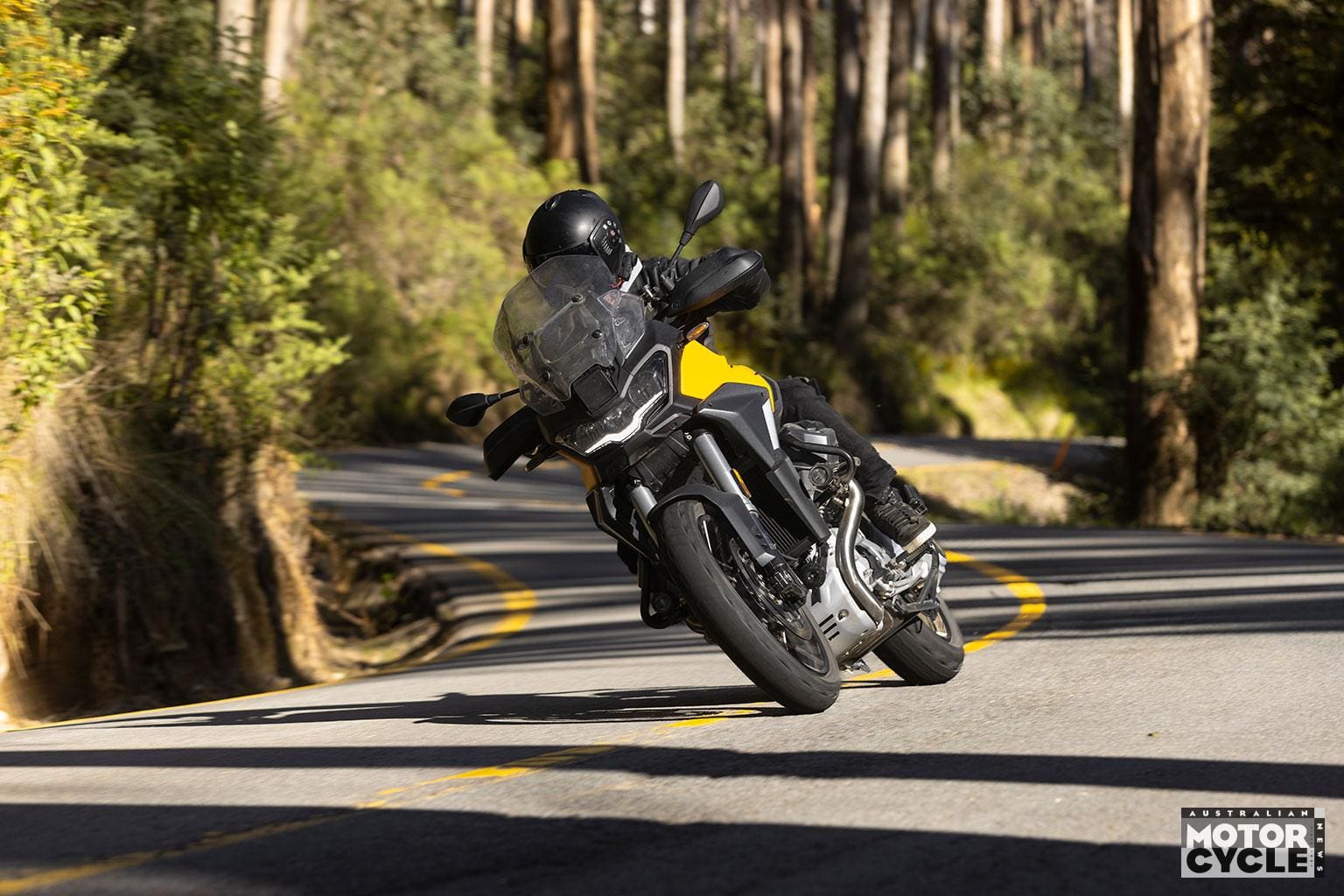
Twin to the Mandello?
The Stelvio’s Italian curves might be reminiscent of the Mandello, but the chassis has been completely revised from the ground up to cope better with unsealed surfaces and undulations. There’s now 170mm suspension travel at both ends and increased ground clearance, while the beefed up 46mm Sachs fork and KYB shock feature adjustable rebound and preload, plus a remote adjustment knob at the rear. Eight front anchor points now attach the frame to the engine, resulting in a 20 percent increase in chassis rigidity.
Braking duties are taken care of by Brembo, with radial-mount monoblock calipers chomping on a pair of 320mm floating steel discs at the front, along with a 280mm disc with dual-pot caliper at the rear. A larger 19-inch front rim now accompanies the 17-inch rear for increased dirt stability, wrapped with tubeless Michelin Anakee Adventure hoops.
To compete in the high-end adventure category, you need to provide plenty of tasty electronic features as well, and Stelvio doesn’t disappoint. There are more gizmos than you shake a dead tree limb at, including five separate riding modes (Rain, Road, Tour, Sport, Off Road), four-level adjustable traction control linked to an onboard six-axis IMU, and an electronic cruise control.

The riding modes are fairly self-explanatory, with each one providing tailored levels of engine, braking and traction control to suit the riding scenario. Rain mode dials back the engine and brake assertiveness while amping up the traction control; Sport faithfully dishes the rider up with as many helpings of kilowatts and newtons as they can handle; Off-Road also deactivates the rear ABS for more rider control in the dirt (and for doing sick skids). The TC can be easily adjusted on the fly in every mode, and – handily – the setting is remembered by the ECU when you switch the bike off and on. There’s also a lovely big 5-inch TFT screen mounted centrally on the dash, which displays clear and intuitive menus as you scroll through its functions using the bar mounted D-pad. They say size doesn’t matter, but when it comes to motorcycle cockpit displays some extra inches are more than welcome.
The Stelvio also features several cutting-edge safety systems, including Forward Collision Warning (FCW), Blind Spot Information System (BLIS) and Lane Change Assist (LCA) functions, thanks to two front-mounted radars. According to Moto Guzzi, the 4D Imaging technology – developed by Piaggio Fast Forward in Boston – boasts a wider field of vision and more reliable monitoring regardless of lighting and environmental conditions compared with traditional ultrasonic sensor-based systems. Visual and audible cues help alert the rider when objects are sensed approaching within unsafe proximity or speed parameters, though they’ve been tailored to not be overly intrusive in everyday riding. As an example, the screen flushes an amber warning colour at the bottom left or right extremity when traffic is sensed approaching a rider’s blind spot, rather than a flashing red light or something equally distracting (though the alerts can be switched off altogether for preference). Electronic Following Cruise Control can also be enabled with the addition of a separate module, allowing the Stelvio to automatically adjust speed relative to the vehicle in front.
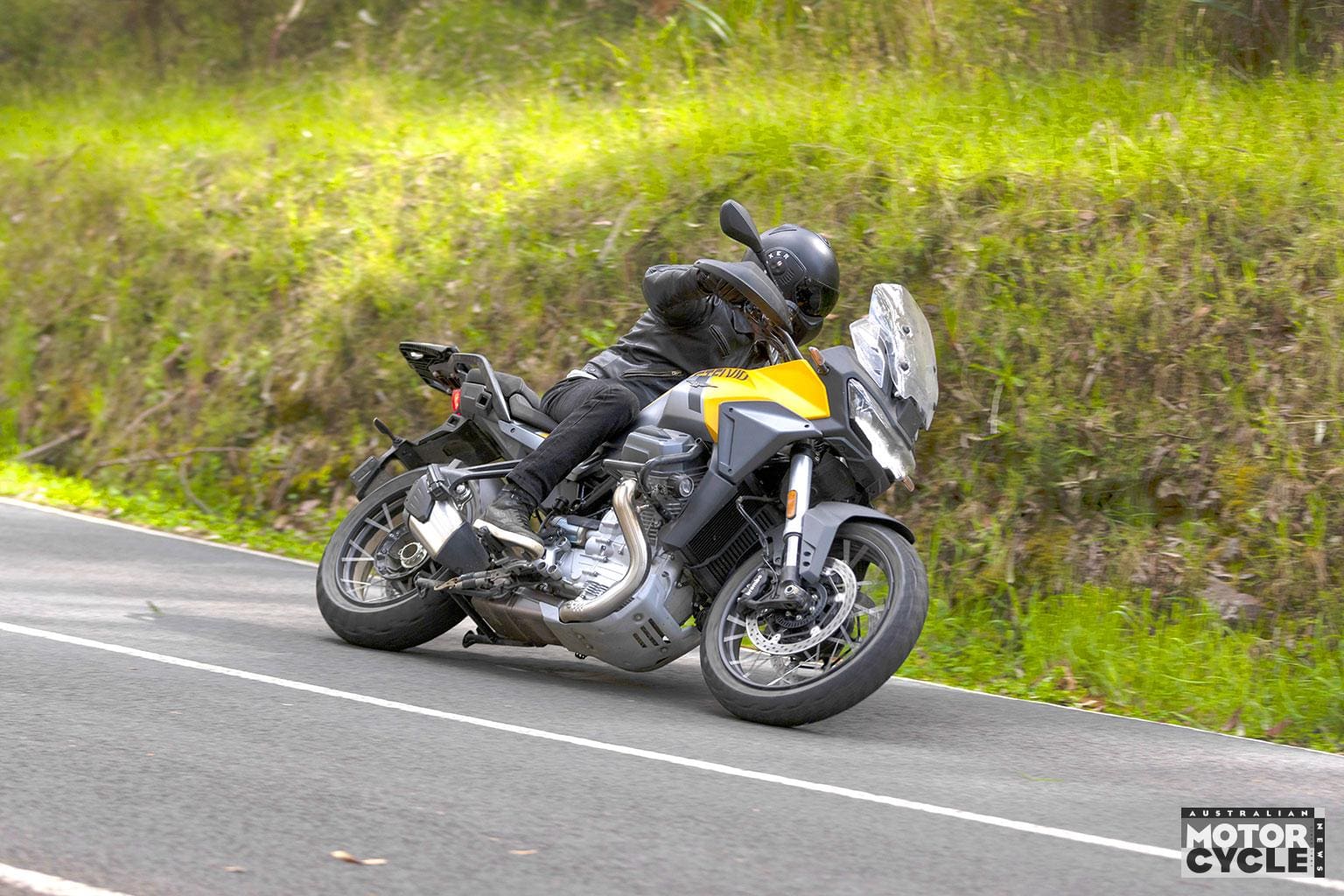
Ride above the rest
A dazzling array of features doesn’t always translate to an amazing ride, but first impressions climbing onto the broad seat are good. At 830mm high, the seat isn’t awkwardly tall for those of us not born with giraffe legs, while still providing plenty of room. The ’bars are positioned a good distance above the headstock, resulting in a seat-to-bars-to-pegs triangle that places no weight on your wrists and settles you into an upright posture that feels both neutral and natural.
Around town the heat build-up from the engine is noticeable but not uncomfortable, and the clutch and drivetrain engage with a reassuring mechanical solidity without quite exhibiting the polish of some rivals. The throttle picks up smoothly though, and a counter-rotating crank shaft helps to even out back-torque reactions when decelerating at lower speeds, making the Stelvio an amiable enough mount in heavy traffic. The view provided by the erect ride position makes navigating through the urban chaos like playing checkers on easy mode, but while the Stelvio tolerates traffic-light forests with admirable stoicism, its gruff V-twin feels impatient to explore the open road.
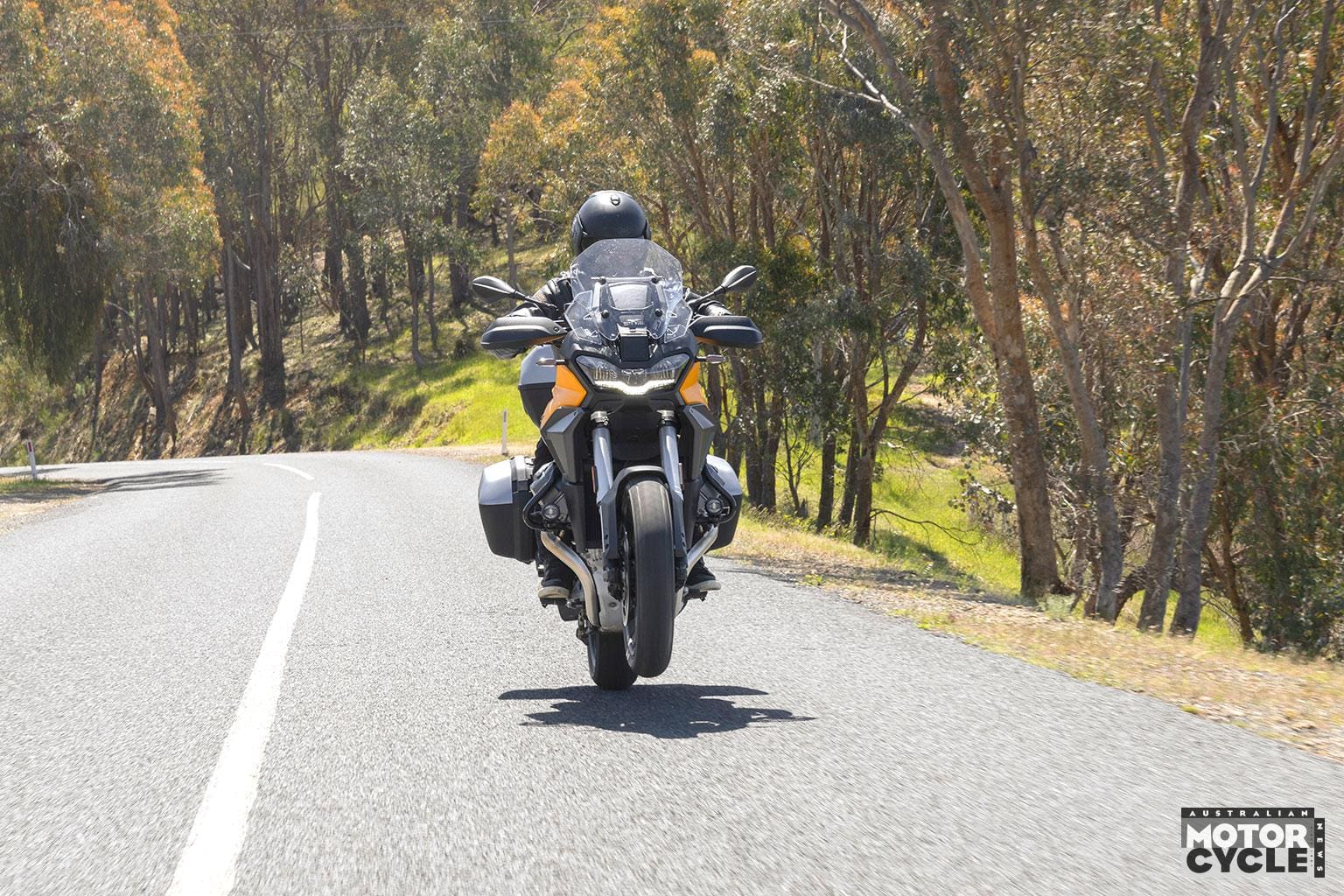
Released to roam free in Victoria’s high country, the Stelvio feels completely in its element. As the kilometres pile up you begin to really appreciate details like the supportively cushioned, textured seat, electronically adjustable windshield and handy ’bar toggle for adjusting your cruise control speed. My steed was also optioned up with ’bar warmers, quickshifter, hard panniers and 52-litre top box, all of which proved their usefulness at various points throughout our multi-day journey.
Moto Guzzi has really nailed the ‘touring’ part of the brief, with the Stelvio covering distance effortlessly thanks also to a suspension tune that strikes an excellent compromise between supportiveness and pothole-soaking compliance.
At the end of some long days in the saddle my posterior was surprisingly ache-free and, although I didn’t get a chance to sample the pillion seat, I’m sure a passenger would find the accommodation equally agreeable. The remote rear preload knob allows the shock to be easily stiffened up for two-up journeys and the capacious optional 52-litre top box swallows two full-sized helmets no problem – although the fact it’s not rated for heavy loads limits the type of luggage you can cram into it.

Taming the terrain
The hot-rod sound the V-twin belches out when you crack the throttle makes it hard not to dig the spurs in pretty frequently, and this reveals an unexpected side to the Stelvio’s nature. Not only do the bouncy bits provide a quality ride but the fork and shock offer up a high level of feedback and sophistication as well, giving you the confidence to throw the bike around pretty vigorously down a winding road. There’s a tautness to the initial stroke that means the chassis feels poised rather than soggy, despite 170mm of suspension travel fore and aft, allowing the excellent stoppers to be exploited to full advantage while trail braking into bends. Those Brembo-badged calipers adorning each end bite strongly when you apply the levers, but once you’re used to it the feel and modulation is excellent.
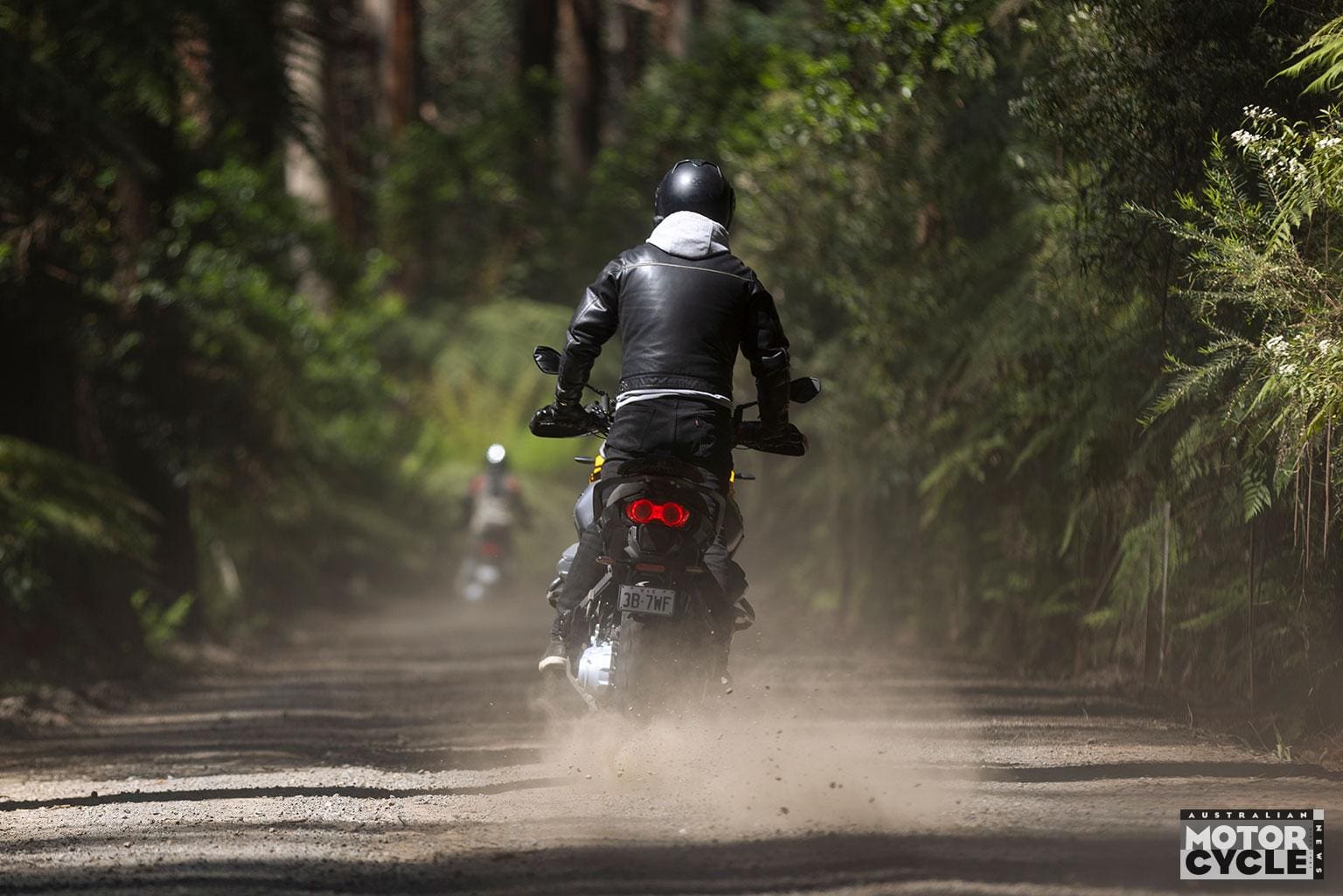
The Michelin rubber is a more than willing accomplice to these shenanigans, with enough edge grip to get the pegs grinding despite identifying as adventure rubber. The semi-knobby hoops offer enough purchase to sail along a gravel road at a respectable pace as well, without quite inspiring the same levels of assurance they provide on tarmac. In trickier deep-gravel sections the front end felt slightly aloof at times, and the Stelvio’s 246kg impose themselves on the dynamics a bit more. While it proved more than capable of negotiating all manner of surfaces, those lovely exhaust headers look a little exposed to punishment if one’s ambition were to outweigh one’s talent on a rocky path.
This Guzzi is far too handsome to be subjected to that type of indignity, so I preferred to exercise a little more discretion while bombing along sketchy trails standing on the footpegs. Speaking of which, the ’pegs can be converted to metal units simply by removing the rubber inserts with an allen key, although I didn’t find that necessary. A little more width for my boot would have been nice though, as the broad tank area pushed my knees out a bit when trying to rest my legs through straighter bits of terrain. The factory quickshifter fitted to my example still made it a cinch to swap cogs while standing though, and that lovely V-twin offers such incredible flexibility while reverberating its sonorous BRAARP off the scenery that you can pretty much leave the bike in third gear through the tighter stuff.

Fitment of more hardcore knobbies would enhance the Stelvio’s bush-bashing abilities for more serious cross-country pursuits, but to my mind the Moto Guzzi’s Mandello del Lario’s designers have created a machine that excels at exactly what it’s intended for – covering distance with comfort and panache on a huge variety of roads. Thanks to the unique engine layout and styling, it’s a motorcycle with real charisma as well, and where it used to be said that Italian machines came with ‘charming’ idiosyncrasies, Piaggio’s ownership means Moto Guzzi benefits from properly modern engineering and cross-development of parts with other brands like Aprilia.
Given the asking price it would be nice if certain features like heated grips, smartphone connectivity, quickshifter and tyre pressure monitoring were standard fitment, but this Moto Guzzi dish still comes loaded with plenty of juicy toppings, along with a rich Italian pedigree and gusto that make it a compelling alternative to the adventure bike mainstream.
PROS – Grunty, hot-rod V-twin, cutting edge radar tech, terrific ride, handling and comfort.
CONS – Quickshifter should be standard. More peg width for gravel riding, please. Headers could take a beating.
Stelvio Pass
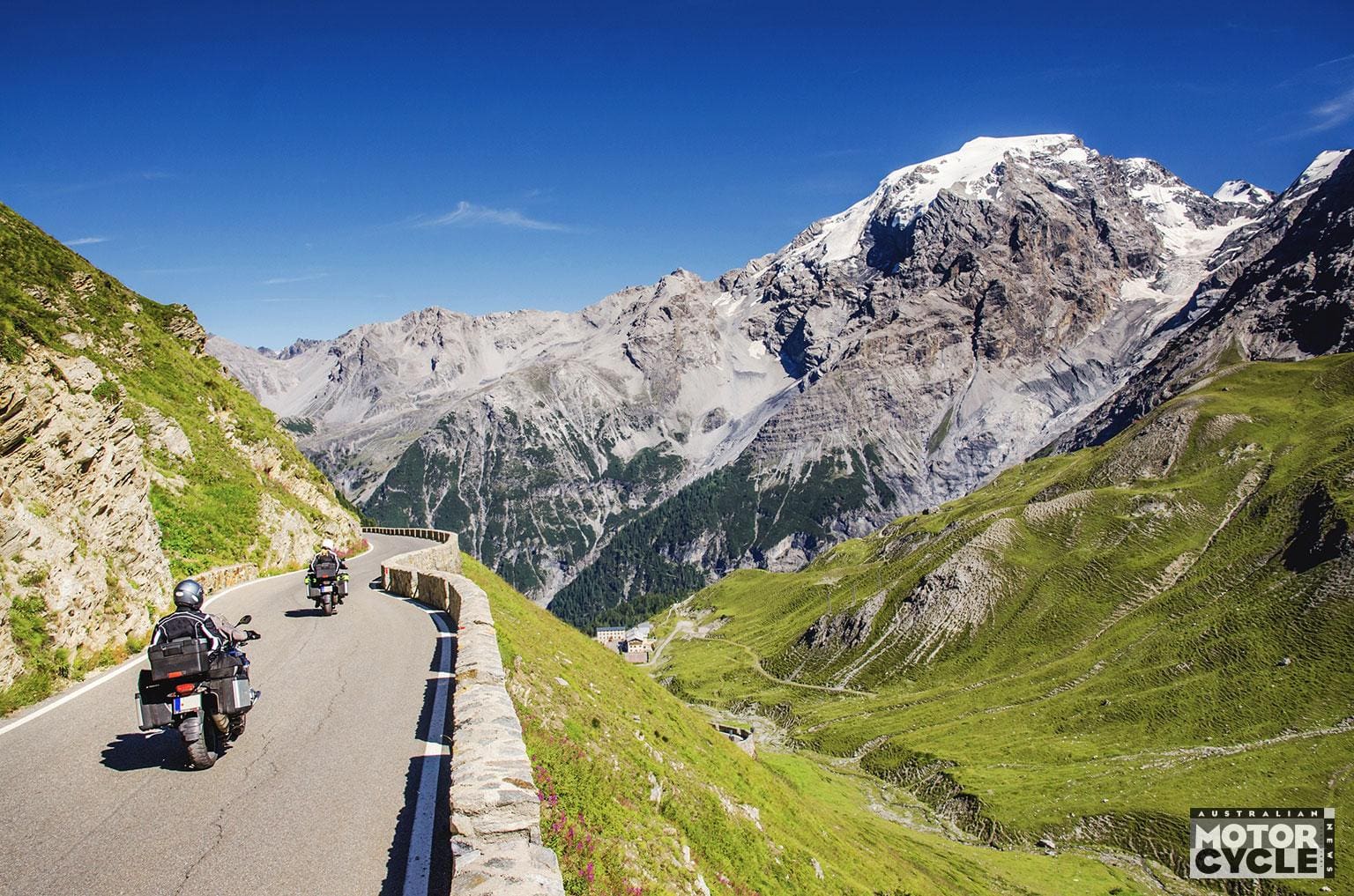
The spectacular mountain pass that the Moto Guzzi Stelvio takes its name from was built by the Austrian Empire from 1820-25, ascending 1871m through the Italian Alps. Designed by Carlo Donegani, its 75 hairpin turns, including 48 marked on the northern side, retain much of the original layout. Once a strategic border between Austria and Italy, Stelvio was the site of fierce World War I battles amidst its dramatic landscape.
Today it’s a mecca for cyclists, motorcyclists and drivers for its challenging switchbacks and expansive alpine views. Known as the Cima Coppi in the Giro d’Italia, Stelvio is a legendary cycling ascent, and each August it’s closed to motor traffic for major cycling events. The iconic pass has been named as one of the world’s greatest driving roads by Top Gear, adding to its allure as a motorcycling pilgrimage.
Specifications
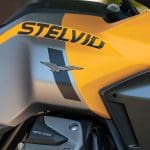
ENGINE
Capacity 1042cc
Type Liquid-cooled 90-degree transverse V-twin with double overhead camshafts and four valves per cylinder
Bore & stroke 96 x 72mm
Compression ratio 12.6:1
Cooling Liquid
Fuelling Electronic fuel injection; dual 52mm throttle bodies and ride-by-wire management
Transmission Six-speed
Clutch Wet multi-disc with slipper clutch, hydraulic control and integrated clutch slave cylinder
Final drive Cardan Shaft
PERFORMANCE
Power 84.6kW (113.5hp) @ 8700 rpm (claimed)
Torque 105Nm @ 6750rpm (claimed)
Top speed n/a
Fuel consumption 5.1L/100km (claimed)
ELECTRONICS
Type Continental Ride-by-wire
Rider aids 3 engine maps (MGCM), 3 levels of engine brake control (MGFM), 4 levels of traction control (MGTC), cruise control.
Modes Touring, Rain, Road, Sport, Off-Road
CHASSIS
Frame material Steel
Frame type Tubular high-strength steel frame
Rake 25.6°
Trail 116.4mm
SUSPENSION
Type Sachs
Front: Telescopic hydraulic upside-down fork, 46mm adjustable spring preload and rebound hydraulics, 170mm travel
Rear: Aluminium single-sided shock absorber left side, adjustable in spring preload with knob and rebound hydraulics, 170mm travel
WHEELS & BRAKES
Wheels Aluminium alloy spoked
Front: Tubeless spoked 3.0 x 19
Rear: Tubeless spoked 4.5 x 17
Tyres Michelin Anakee Adventure
Front: Radial tubeless 120/70 – R19
Rear: Radial tubeless 170/60 – R17
Brakes Front: Dual stainless steel floating discs, 320mm, Brembo radial-mount calipers with 4 opposed pistons and metal braided hose
Rear: Stainless steel disc, 280mm, Brembo floating 2-piston caliper. Continental ABS with cornering function
DIMENSIONS
Weight: 246kg (wet, claimed)
Seat height: 830mm
Width: 945mm
Height: 1400-1470mm (adjustable with windscreen)
Wheelbase: 1520mm
Ground clearance: not listed
Fuel capacity: 21 litres
SERVICING & WARRANTY
Servicing First: 1000km
Minor: 12,000km
Major: 24,000km
Warranty: 24 months
BUSINESS END
Colour options: Yellow/Silver, Grey/Black
Price: $32,890 (ride away)
CONTACT
www.motoguzzi.com/au
